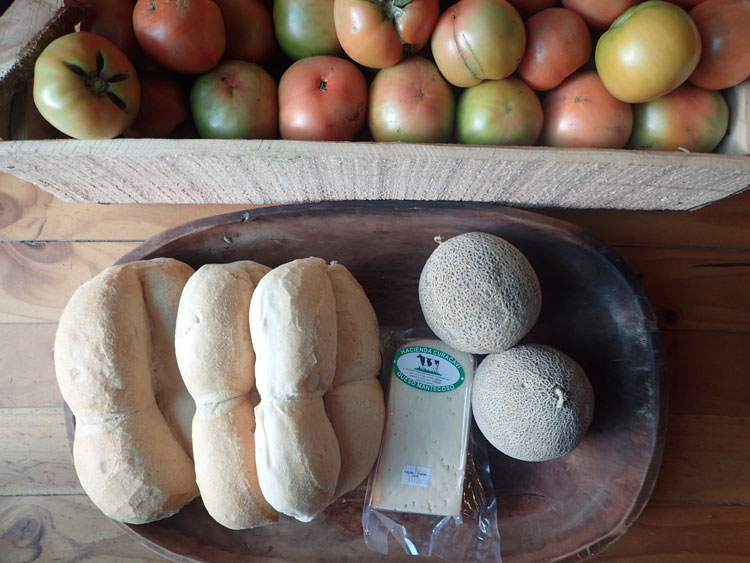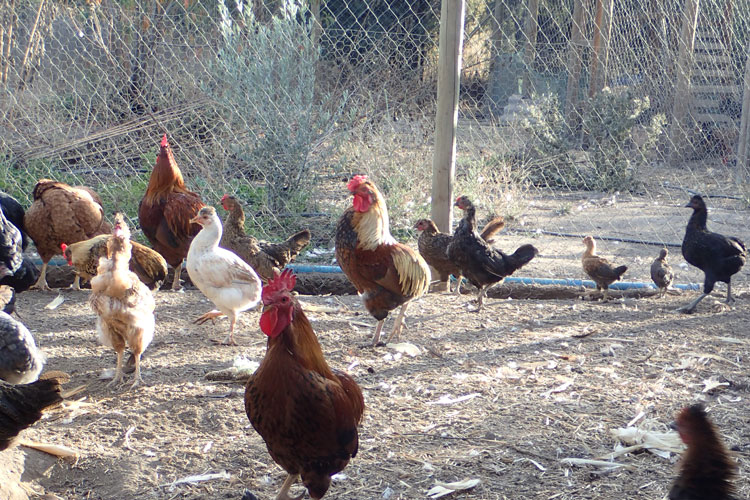An Opportunity for Tech to Reshape the Supply Chain
A silver lining for agriculture amidst the COVID chaos may be closer than you think – in your own backyard.
With traditional ag supply chains disrupted and consumer concerns about empty grocery store shelves on the rise, we wanted to examine this potential opportunity for tech and localized production to reshape the supply chain.
Over the last several weeks, we interviewed six experts from across the value chain, crop, and livestock sectors to gather insight into the impacts of COVID-19 on subsistence, hobby, and small holder farmers across North America. What we found was both anecdotal and concrete evidence of an increasing number of consumers beginning to grow/raise their own food and for those who cannot, an increased interest in producers with shorter supply chains and locally-grown products.
According to Judith Redmond, founding partner for a 450-acre organic farm, Full Belly Farm, in California’s Capay Valley, “Interest in locally-grown, fresh produce has skyrocketed during the crisis.” In a May 10th article by Eric Westervelt from NPR, Redmond commented that “We’ve doubled our Community Supported Agriculture (CSA) box numbers and quadrupled our add-ons like wheat flour, oils like olive, nuts, fruit juices, even yarn.” In the CSA model, members buy a share of a farm’s harvest that gets delivered to them on a regular basis. Sarah Voiland, operator of an organic CSA, Red Fire Farm, in Massachusetts noted that people “don’t want that many hands on their food right now” as supply chains for CSA models generally only include harvest and boxing/packaging before the consumer picks up on site. “In all the time we’ve worked with CSAs, which is several decades, we’ve never seen a surge as quickly as we have of the last few weeks,” said Evan Wiig with Community Alliance with Family Farmers.
This rise in interest in locally-grown food with shorter supply chains has propagated into the sector with the shortest supply chain and closest proximity – our own backyards.
It’s important to note that what follows is not an effort to paint a comprehensive picture as we are clearly in the early stages of conflict with COVID and the “fog of war” has settled in thick and heavy.
Consumer Growers
We started by asking several experts if they’d seen an increase in the number of consumers beginning to grow/raise their own food and trying to be less resilient on a shuttering supply chain?


Jeremy Stroud
Investment Management Associate
Bonnefield
I have noticed several friends with agricultural degrees or backgrounds spark a newfound interest in fruit and vegetable gardening and small-scale greenhouse operations for local sale. These are mostly [younger individuals in their twenties to forties] who already possess the technical skills to execute on this effectively, and have decided that they now possess the time, land, equipment, and interest to put it into action.


Allison (Grainger) Nepveux
U.S. Grains Council
I do think urban areas are seeing an increase in victory farms [author comment – also called war gardens, the US government encouraged residents to plant victory gardens of vegetables, fruits, and herbs in their private residence and public parks during World War II to not only supplement their own rations, but boost morale]. But, more generally, I think there will be an even more accelerated shift towards resiliency and sustainability in our supply chains, with technology playing a hug role in enabling this progress. I hope that we are able to see more investment in tech that cuts down on labor, helps ensure worker health and safety, and contributes to the progress for more resilient supply chains. I would assume that a rise in impact investing would occur on the backside of this.


Preston Ingram
Relationship Manager
Texas Farm Credit
The best data I have is for backyard chickens. I recently had a neighbor buy chickens who told me the guy he bought them from had sold 2,000 laying chickens in one day while another [vendor] who sells chickens sold about that many as well [recently]. I think COVID (and the resulting lack of eggs in the store) has made people who have always been interested in chickens realize the benefit of having them in their backyard. It was basically the push they needed towards action.


James Morin
Owner and Founder
Kipling Ridge Farms
We have had as much interest in our meats as we have from folks looking to buy piglets, calves, and laying hens to raise themselves. We have also seen an increase in those looking to garden for the first time, in addition to fruit trees. There is a balance between concern over supply chains and wanting to support more local businesses.
A More Resilient Supply Chain
As Allison alluded to, this move towards resilient and shorter supply chain as well as a rise, at least anecdotally, in backyard gardens could present an opportunity for broader agtech and regenerative farming adoption. We asked the experts their thoughts:


Jeff Caldwell
Content Marketing Manager
Lessing Flynn
I have seen a rise in the interest in regenerative practices across the board. The challenge is connecting those practices at the farm level to consumer demand for general sustainability. I think one thing that the COVID-19 situation has done is expose some vulnerabilities in our food system and supply chain. It’s an amazing system, but some of the efficiencies and “just in time” supply chains for products like pork have led many to look to smaller, less centralized food processing facilities around the country as a way to enable subsistence or smallholder farmers to do more for themselves and their neighbors. A hog farmer told me [a couple weeks ago] that he’s had phone calls from consumers in 15 states asking about securing pork supply, but he doesn’t have the processing capability himself, and small processors and community meat lockers/butchers are in such high demand that many have waiting lists months long. So, a general decentralization with smaller processors around the country could help better sustain smallholder producers to create strong supply chains.


Connie Bowen
Founder and Executive Director
The Yield Lab Institute
Well, could be, but I tend to disagree. Subsistence farmers tend not to have large discretionary spending options, so it’s difficult to buy new tools. Regenerative practices might be adopted slightly more (rotational grazing, etc), but not in a way that can be efficiently monitored/measured for actual environmental benefits (ie: carbon sequestration, soil health, water use, run-off implications, fertilizer applications, and pesticide applications.)
Ingram – Texas Farm Credit
The right person will latch on to the idea of learning what technology has to offer as well as the intricacies of raising a crop. One underlying goal for any small farmer would be freedom. They need a system in place that allows them to work on their crops or livestock when they are able to, but also gives them the freedom to leave on vacation, [for example] and now worry if there is death or damage. This system is certainly more possible today than ever.
Ingram himself is currently researching available livestock tech to outfit on cattle to provide him both freedom of maneuver while maintaining insight into his animal’s health.
As a subsistence farmer myself in northeast Texas with a variety of vegetable and brassica crops, livestock, and greenhouse produce, I agree with the sentiment that an attractive component of agtech adoption is the freedom to continue a more subsistence-based way of life without it consuming all of our time and resources.
Morin – Kipling Ridge Farm
There is a huge learning curve so there will be a ready market for things to make that easier from the agtech perspective. For the regenerative side, as people begin to have a closer connection to their food again (doesn’t get any closer than growing it yourself), they will want to be sure they are growing in the healthiest way possible. Wide open door for regenerative to take a foot hold.

Smallholder Farms as a Market for AgTech
We believe that despite the opportunities for adoption, smallholder farmers have historically not been the target customer market for agtech companies as this market is too disaggregated, lacking in scale, and generally not commercially-oriented. We asked our experts about the possibility of aggregating this class of growers in a meaningful way to increase adoption.
Ingram – Texas Farm Credit
There are three main factors here. First are the two mentioned above. This is a hobby, and technology could bring an appealing facet to that hobby. Next, technology could help the grower have the freedom they need to raise a healthy crop and still go on vacation. Last, one concept I can see working to slightly commercialize subsistence farming is similar to a CSA in neighborhoods.
Certainly not everyone in the neighborhood would enjoy the hobby of growing a garden, but those that did could raise and sell to their neighbors. The CSA model will never be a huge revenue generator, but it could potentially pay for a hobby farm. If you could create a system around this that met the above goals and was structured in such a way that it had a relatively low barrier to entry, I could see much wider adaptation of this in the next few years.
Caldwell – Lessing Flynn
I think the smallholder farmer right now doesn’t have the revenue potential or scalability to justify spending on ag tech. The necessity of financial viability makes it difficult to target the development and marketing of products to such a market.
It’s a call for some kind of efforts to create cooperatives or business entities that provide smallholder farmers more purchasing power when it comes to technology that can bolster production and output. I think something like a smallholder farmer cooperative encompassing enough members to create some purchasing power can directly connect with ag tech companies to create a value chain that can be financially beneficial to both parties. It’s a strategy that’s historically enabled farmers to access things like crop inputs at costs that wouldn’t be possible if they were doing it alone.
And I think it can work for ag technology today; there’s a mutual hunger in agriculture right now — farmers want technology to be more productive, and tech companies want customers. The money required to make that connection remains the main hindrance.
Morin – Kipling Ridge Farms
I understand the sentiment – but I think tech in general is becoming more accessible, so I don’t see it as a barrier. That being said, we don’t employ much of it ourselves and we certainly aren’t a subsistence farm – we just haven’t seen the need for it as of yet.
Nepveux – U.S. Grains Council
I do think there is a distinction between digital ag technologies and ag breeding technologies. Things like biotech are often adopted by smallholder farmers (when governments are open to these innovations) because they are size and scale neutral. [This] hasn’t always been the case for digital ag tech, like robotics, machineries, tracing technologies, etc. The front-end investment has been too high.
Bowen – The Yield Lab Institute
That’s part of the reason. The bigger reason (and this is the same driver, probably, of the fact that VCs tend to invent further downstream) is that money follows opportunities to make more money.
I also think that measurability is a big factor here – digital tech is useful and valuable largely as an aggregator of data, and biological/mechanical tech is difficult to get to market without having the pre and post implementation measurements provided by digital tech (chicken & egg problem.) It’s difficult enough to measure impact of various technologies on large scale farms where everyone speaks one language and has access to WiFi.
I think that the oft-cited “fact” that subsistence farmers aren’t commercially oriented reflects societal bias against poverty more than it reflects reality. Mindsets can shift when space is given for said mindsets to shift. There are ways to aggregate smallholder farmers, but none of them are easy.
Stroud – Bonnefield
Generally ag-tech firms will aim to achieve a specific economy of scale that caters towards large and medium sized farm operations. This is particularly the case for ag-tech companies with a hardware installation component, because the initial CapEx may be amortized over a greater base of acres.
Against this backdrop, I believe that some of the winners in the ag-tech space over the next year will offer SaaS platforms for farm management, labor reduction and perhaps localized digital marketplaces.
On the other hand, large-scale commodity farmers I’ve spoken to are more hesitant to invest in significant, non-essential CapEx projects currently as the continuation of the coronavirus and social isolation create uncertainty for soft commodity markets and therefore future farm incomes.

The Impact of COVID
Many believe COVID-19 will have both positive and negative impacts on the smaller farmer in the coming months.
Ingram – Texas Farm Credit
In the coming months, actually, I would assume people will start moving back towards their old life. There has never been a better time than now to market agtech at a subsistence level than right now. Until the next crisis, subsistence farming will decrease in popularity over the coming year assuming we work our way out of these supply chain issues.
Caldwell – Lessing Flynn
I think the COVID-19 pandemic will cause increased interest in consumers raising their own food where they can if concerns remain about our country’s food supply chain. We’re a nation that’s become accustomed to having easy access to an incredible diversity and quantity of food, and meeting those diverse, specific needs may increasingly become a matter of consumers producing exactly what they want and need. On a broad scale, adopting that sort of trend will require changes in how food is raised, distributed, processed and sold in this country. And that will be no small effort. I suspect the pandemic will cause continued panic-buying as a knee-jerk reaction to occasional disruptions in food availability. Empty grocery store shelves will continue to fuel angst, and smallholder farmers and local food systems could see increased opportunity in connecting directly to consumers if that angst continues.
Morin – Kipling Ridge Farms
That’s a big question, but it’s pertinent as we are just starting to see some of the effects on the food supply chain. This will have long lasting impact on pricing and availability of inputs (seeds/starter plants/livestock/tools etc). A lot of people will be looking for not only knowledge, but practical items that may be in short supply – all the while dealing with a food supply chain that may be breaking down. In certain areas (such as ours), we are seeing a surge in demand for laying hens, without any forethought as to what will happen to these birds come winter (we are four hours north of Toronto…winter is a serious issue for livestock farmers, subsistence or otherwise.)
Stroud – Bonnefield
The average commute for a North American is about twenty-seven minutes each way, which equates to an additional four and a half hours each week based on five days of work. Most small-scale farmers I converse with are currently working remotely, and many now have additional capacity to spend on their farms or in their communities.
Creativity and innovation have a tendency to spark during times of excess capacity, particularly for platform-based technology, minor efficiency improvements and paradigm-shifting software. This comes in contrast with the immense, slow-moving, and often academic R&D mammoth that has been steadily progressing agricultural productivity since the turn of the nineteenth century.
Conclusion
This trend is still in its infancy and will continue to evolve as consumer preferences adapt to the downstream impacts of COVID on their store shelves. The longevity of interest in hobby farming today remains to be seem as traditional supply chains settle in to a new COVID “normal”. What is clear today is that opportunities are present to adopt both technology solutions and sustainable farming practices for the right grower with a bias for change and innovation.
If you found this article interesting, please consider sharing with your audience or subscribing to our newsletter to be informed of future blog posts.
